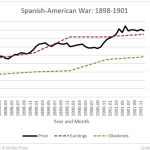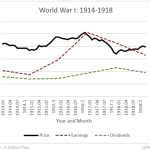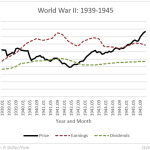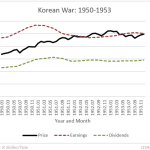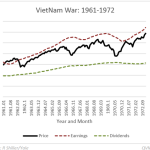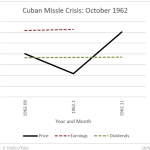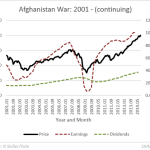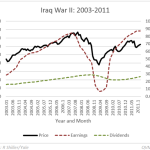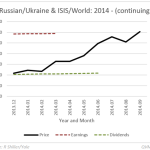War Risk Considerations For U.S. Stock Market | Seeking Alpha
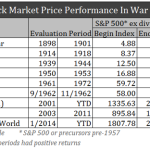
Summary
War risk is one of three key fear areas today: war, bubbles or overvaluation, and economic slowdown or deflation.
Historical evidence from 1898 shows that US wars have not had an adverse impact on US stocks overall – avoiding stocks due to war has not been a successful approach.
This article is relevant to diversified US large-cap stock indexes only, not to foreign stocks or individual stocks.
The three big current arguments against owning stocks or other risk assets are:
Asset bubble (significantly overvalued asset prices)Economic slowing or deflationWar (direct US involvement; or energy, materials and trade disruption)
We will address the question of asset bubbles and economic slowing or deflation in another article. This one is about war risk to US stocks.
Note: This article is intended only to relate specifically to the S&P 500, and collaterally to broad, market-cap weighted, large-cap US indexes. ETFs that come under this specification include: SPY, VOO and IVV for the S&P 500 specifically; and probably total market ETFs such as ITOT and VTI, IWW and VTHR; and probably various ETFs following large-cap indexes from Russell such s VONE, ONEK, VONG, VONV, IWB, IWD, and IWL; or ETFs following US large-cap indexes from Standard and Poor’s such as OEF.
Summary:
War has not been bad for US stocks over more than 100 years. Don’t run away from stocks due to war risk.
Caveat, all data is with war that is outside of our homeland (except for the beginning of a war caused by 9/11). No data is available for US stocks with war here (we don’t have data for the Civil War period). Also, the risk of a land war elsewhere, with a cyber-war within our borders is not considered, as there is no precedent.
Obviously, war is a horrible thing with devastating impact on individuals and families, and specific companies or industries; but from a stock market perspective only, it has not been a reason to avoid broad stock indexes.
Historical Data:
Using US stock market data from R. Shiller of Yale, which is for the S&P 500 since its inception in 1957, and best proxy precursors prior to that back to 1871, we have measured and plotted US stocks prices, earnings and dividends in each of several key war periods.
This table lists key war periods and shows the beginning and ending dates (rounded to beginning and ending of calendar years – except for the Cuban Missile Crisis which is for the month before, during and after the near nuclear war). It also shows the beginning and ending price of the S&P 500 (or its precursors), and the annualized rate of price change for the period (dividends are not included in the return calculation – price only).
Historical Charts:
Sometimes a visual approach is more revealing than a data table, so here are charts of price, earnings and dividends for each of the war periods in the table above.
The table and the pictures speak for themselves. Foreign wars are awful experiences, devastating lives and families, but they have not so far been particularly damaging to the US stock market. Other risks are of greater importance.
A war within our borders is probably an entirely different matter, and something that probably would be quite damaging to US stocks, but there is no data to support that; only logical argument of total industrial and commercial disruption and destruction. An effective massive cyber-attack could have at least very negative impact on stocks, but that also has no precedent.
The past is not the future, but historical experience suggests that the level of war ongoing in the world today is not a reason to hide from US stocks.
We do not make the same argument about European stocks (particularly in nations abutting Russia), or about Israel or the GCC countries or Nigeria. Each of these faces potential combat on their soil and (except for Israel) facing potentially superior forces; which is a totally different matter than the US being involved in war on foreign soil as the superior force.
Disclosure: QVM has positions in SPY as of the creation date of this article (September 2, 2014). We certify that except as cited herein, this is our work product. We received no compensation or other inducement from any party to produce this article, and are not compensated by Seeking Alpha in any way relating to this article.
General Disclaimer: This article provides opinions and information, but does not contain recommendations or personal investment advice to any specific person for any particular purpose. Do your own research or obtain suitable personal advice. You are responsible for your own investment decisions. This article is presented subject to our full disclaimer found on the QVM site available here.
Disclosure: QVM has positions in SPY as of the creation date of this article (September 2, 2014). We certify that except as cited herein, this is our work product. We received no compensation or other inducement from any party to produce this article, and are not compensated by Seeking Alpha in any way relating to this article.
Source:
War Risk Considerations For U.S. Stock Market
Link:
War Risk Considerations For U.S. Stock Market | Seeking Alpha
See which stocks are being affected by Social Media


